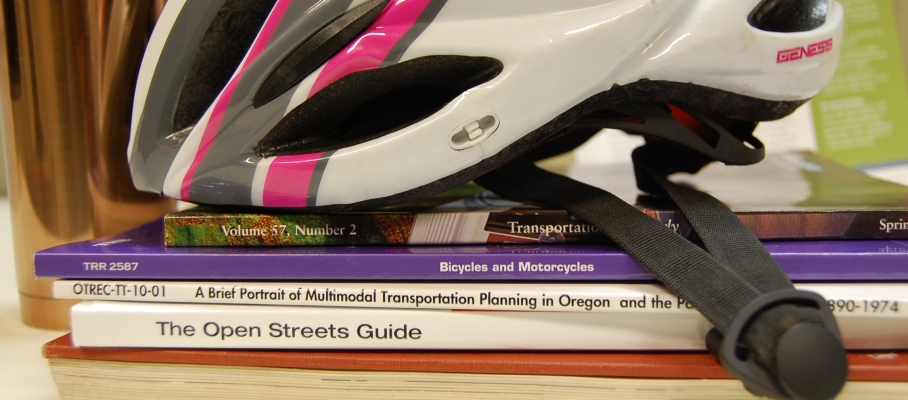Multimodal curriculum brings students and planners up to speed

A NITC education project offers a new curriculum in multimodal transportation planning for graduate courses.
The development of this curriculum, along with a freshly minted course in multimodal transportation, allowed the University of South Florida (USF) to begin offering a graduate certificate in sustainable transportation for the first time in the spring of 2016.
The certificate program is multi-disciplinary and draws students from various fields including planning, engineering and public administration.
These educational efforts are designed to meet the needs of a growing field. Multimodal planning—planning for walking, cycling and transit in addition to auto travel—is becoming increasingly prioritized as communities across the U.S. redefine their planning practices.
As with any fast-developing discipline, the state of the practice sometimes outpaces existing courses and training materials.
Led by Kristine Williams, the USF Center for Urban Transportation Research (CUTR) developed a set of training modules that can be used in university settings and also to help planners in the field stay on top of the latest developments.
“There are pieces of multimodal planning in different courses, but the state of the practice has really changed a lot. We wanted to develop a course that would reflect where we are today in terms of best practices in planning for the different modes," Williams said.
Until 2015, the urban and regional planning program at USF had no transportation courses. Urban planning students who wanted to study transportation had to do so through the engineering program.
The urban and regional planning department asked CUTR researchers to develop a course on multimodal transportation planning, and the funding from NITC allowed Williams and her team to create and advance a flexible, multi-purpose curriculum.
“We wanted to develop something that any university could use and adapt. The materials are relevant to a lot of different courses: transportation, comprehensive planning, architecture or community design,” Williams said.
The multimodal planning course was first offered at USF in the spring of 2015. Now it is included as an elective in the new Sustainable Transportation Certificate. The focus of the course is primarily on the local government level, with some aspects relating and tying in to regional transportation planning.
“I think this type of course is essential moving forward. If we can get the students trained in the latest practices, then as they go into the field they’re not still working out of old textbooks and old ways of doing things," Williams said.
The NITC project had two phases. The first phase provided an overview of multimodal planning and its role in advancing livability and related objectives.
The second phase built on the first with advanced applications to provide practical experience. The included modules guide students through the process of developing a multimodal transportation plan, beginning with doing the initial data collection and inventory and continuing through analysis, visioning and priority setting.
Through evaluating an existing multimodal plan and proposing improvements, students gain an understanding of the state of the practice as well as critical analysis ability.
The modules grew from training materials created by CUTR for local governments and agencies.
“Communities need help as well. We have so many small communities in the U.S. that can’t afford consulting and do their work in-house. This is really good crossover technical assistance to local governments," Williams said.
To read more about this project, visit the project page.
The first phase of the complete curriculum is available for download here, and the second phase with practical modules is here.
